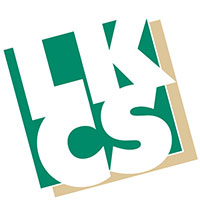Banks and Credit Unions have turned out to be among the most enthusiastic users of digital signage, and it benefits both the financial institution and those it serves. Banks and Credit Unions have long been thought of as stuffy venues. However in recent years, Banks and Credit Unions have started to overcome that reputation, and digital signs are playing a key role.
Digital signage has proven to be a remarkably effective tool for creating a welcoming and engaging experience within the branches. It has enabled financial institutions to improve the customer’s experience and improve communications with customers, visitors, and employees. Through the use of digital signage, financial institutions are now able to provide real-time updates on relevant information. They can display the stock market and currency exchange rates, but also provide personalized information on relevant products and offers for individuals in the branch.
Here are 5 reasons why digital signage and financial institutions go together so well.
- Reduces Perceived Wait Times
When customers have something dynamic and engaging to view while they wait in line for the next available teller, those waits won’t seem so long. Whether the digital signage offers information about banking services, headline news, sports scores, or weather, it gives people something to do other than count the number of people in front of them.
- They’re Terrific for Informing Customers
Digital signage can be the perfect medium for offering customers faster alternatives to in-person services or new service options available to them. For example, it can inform customers waiting in line about how to download a mobile banking app that lets them check balances or transfer funds. Alternatively, it is a great way to communicate about changes in service such as branch hours. Many Banks and Credit Unions use direct mail, email, and their website to keep customers informed of new products and services. Digital signage is a perfect way to leverage the customers time in a branch to inform them of new products such as credit cards, insurance offers, or loan specials.
- Save Time and Money
Preparing a static, printed sign is labor intensive, expensive and time consuming. The same message can be created and displayed far more quickly with a digital sign. Add to that the recurring expense of printing new signs as needs change versus simply updating a digital sign with a few keystrokes, and it doesn’t take long to begin seeing the ROI from a digital sign.
- It’s an Environmentally Responsible Option
Sustainability is increasingly important to today’s consumer, and many customers have already opted for electronic statements and online banking, reducing resource usage and helping banks and credit unions keep their resource and printing costs down. When financial institutions have captivating, compelling digital signage content, there’s less need for printed matter, and no leftover printed matter to deal with once a promotion has ended. A new messages can be added at any time, with no need to “throw away” the old messaging.
- Increases Employee Communication
To communicate effectively with employees, managers need to do a lot more than sending emails and pinning notices on bulletin boards. Digital signage for employee communication bridges the communication gap between managers and employees. It is being used to inspire employees, to encourage collaboration, and to make them aware of company updates.
Banks and Credit Unions are discovering new ways to connect with their customers, and they’re taking their cues from welcoming spaces like coffee houses in an attempt to rehabilitate the financial industry’s reputation as being dull. Making today’s financial institutions into comfortable, welcoming spaces helps build the relationship between the financial institution and the community, and digital signage can be an important part of that. Whether they’re used to inform, advertise, or simply keep customers entertained as they wait in line, digital signs make perfect sense for today’s financial experience.
Did you like this blog post?
Get more posts just like this delivered twice a month to your inbox!



